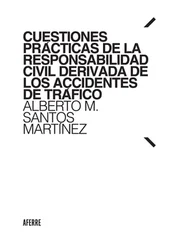Santos-Dumont had a romantic vision of every person on earth possessing their own Baladeuse , so that they would literally be free as birds to travel anywhere they wanted anytime they pleased. The future of flying machines, he thought, lay in the lighter-than-air balloon not in the heavier-than-air plane, which as far as he knew had not progressed beyond the unpowered glider. He envisaged gigantic airships—not rigid zeppelins but big, soft balloons with their payloads slung below—whisking travelers between Paris and New York, Berlin and Calcutta, Moscow and Rio de Janeiro.
Santos-Dumont did not believe in patents. He made the blueprints of his airships freely available to anyone who wanted them. He saw the flying machine as a chariot of peace, bringing estranged cultures in contact with one another so that they could get to know one another as people, thereby reducing the potential for hostilities. In retrospect it seems a naive vision, with the Great War only a decade away, but his optimism was not uncommon among men of science at the turn of the century, when novelties such as the electric light, the automobile, and the telephone were transforming society in fundamental ways.
That December night in 1903, Santos-Dumont and his elevated companions reflected on what a great year it had been for him. He had had none of the usual accidents, which had made him famous as the man who defied death time and again. None of his customary crashes on the jagged rooftops of Parisian hotels, no unexpected nosedives into the Mediterranean, no sudden descents onto a stranger’s land. It had been a tranquil year. In Baladeuse he owned the skies of France. He was the only one who was consistently puttering around in a flying machine. As Santos-Dumont’s butler decanted wine for the guests, Cartier and Princess Isabel offered a toast to their host’s ingenuity. No one else was close to mastering the air—or so it seemed.
Eager for a new challenge, Santos-Dumont joined the competition to build and fly the world’s first airplane. For a few months he appeared to have succeeded, but after an acrimonious priority fight, Wilbur and Orville Wright, who had initially flown in near secrecy, garnered that glory. Santos-Dumont retained the distinction of flying the first airplane in Europe, and his élan and perseverance were credited with inspiring aeronauts across the continent.
Early aeronautics in Europe had the quality of a gentlemen’s club. Balloon meets on Sunday mornings replaced polo and fox hunts. Flying machines were a diversion for the rich men who owned the first automobiles—oil barons, well-heeled lawyers, and newspaper tycoons. They accepted Santos-Dumont as one of their own because he was the fine-mannered son of a coffee magnate. They supported the inventors of dirigibles and airplanes both by funding them directly and by offering lucrative prizes for aeronautical “firsts”: the first to circumvent the Eiffel Tower in a powered balloon, the first to fly an airplane fifty yards, the first to cross the English Channel.
The recreational aspect of these aeronautical contests tended to belie how dangerous they were. More than two hundred men, many of them with wives and children, some of them the top engineers and inventors of their day, died in accidents before Santos-Dumont succeeded. The aeronautical pioneers had none of the modern techniques for assessing the airworthiness of a flying machine. The only way to demonstrate that it could fly was to go up in it, and, as it turned out, most of these fanciful machines either could not get off the ground, stay upright in the air, or descend safely. Santos-Dumont clearly knew the risks involved. And although he told friends that flying gave him the greatest pleasure in life, he would not have courted danger if it were not for a higher purpose—the invention of a technology that would revolutionize transportation and advance world peace.
The first half of his goal was realized in his lifetime. The flying machine of course is now the principal means of conveying people long distances. In the United States alone, there are 90,700 plane flights a day. And in Brazil 157 planes depart for Europe every week. The flight from São Paulo to Paris is eleven hours, a journey that took Santos-Dumont more than a week by steamship and train. Progress toward the second half of his goal has been decidedly mixed. On the one hand, passenger planes, along with the telephone, radio, television, and now the Internet, have turned the world into a global village. When an earthquake strikes El Salvador, food from London can be airlifted there within hours. When an Ebola outbreak is detected in the Congo, doctors from the Centers for Disease Control can be there in a day. On the other hand, military aircraft have caused millions of casualties not just at Hiroshima and Nagasaki but in the ordinary course of war. And then on the morning of September 11, 2001, the unthinkable happened: Two passenger planes were diabolically converted into skyscraper-obliterating missiles. The first great invention of the twentieth century had become the nightmare of the twenty-first.
The Wright brothers had a different motivation from Santos-Dumont in developing the plane. They were not idealists. They did not dream about bringing distant peoples together. They were not thrill-seekers. They did not rhapsodize about the joys of flying or preach a kind of aerial spirituality. They were not playful men and certainly did not host dinners at high tables. They were intent on building flying machines for financial gain, and when the U.S. government initially refused to fund them, they had no moral compunctions about approaching foreign militaries.
In the aftermath of the Great War, when it was evident that the plane could be used as a weapon of mass destruction, Santos-Dumont was the first aeronaut to press for the demilitarization of aircraft. His was a lonely voice, calling on heads of state to decommission their bombers. Orville Wright did not join his call (and Wilbur by then was dead).
Santos-Dumont was perhaps the most revered man in Paris in the first years of the twentieth century. His dapper countenance stared out from cigar boxes, matchbooks, and dinner plates. Fashion designers did a brisk business with replicas of his trademark panama hat and the stiff, high shirt collars that he favored. Toy makers could not turn out enough models of his balloons. Even French bakers honored him, offering cigar-shaped pastries decorated in the colors of the Brazilian flag.
He was famous on both sides of the English Channel—indeed, on both sides of the Atlantic. “When the names of those who have occupied outstanding positions in the world have been forgotten,” the London Times declared in 1901, “there will be a name which will remain in our memory, that of Santos-Dumont.”
The irony in the Times ’s statement of course is that today he is barely remembered outside Brazil, where he is still a hero of mythic proportion. A town, a major airport, and dozens of streets are named for him. The mere mention of his name brings a smile to most Brazilians, as they picture the bygone era when their daring countryman proudly ruled the skies in a tiny balloon. As the rest of the world has largely forgotten Santos-Dumont, Brazilians themselves, in their romanticizing of the man in poems, songs, statues, busts, paintings, biographies, and memorial celebrations, have neglected his darker side. He was a tortured genius, a free spirit who strove to escape the confines of gravity, the peer pressure of his aeronautical confreres, the isolation of his rural upbringing, the small-mindedness of science’s ruling elders, the conformity of married life, the stereotypes of gender, and even the fate of his own cherished invention.
Many boys have dreamed of owning a personal flying machine, a kind of winged car that could take off and land anywhere, without the need of a runway. No one in the twenty-first century has realized that dream. A few elite corporate moguls have come close: They commute to work by helicopter, flying between backyard landing pads and office rooftops. But even a globe-trotting captain of industry cannot fly to his favorite restaurant, the theater, or the store. Only one man in history has enjoyed that freedom. His name was Alberto Santos-Dumont, and his aerial steed was an engine-driven balloon.
Читать дальше












